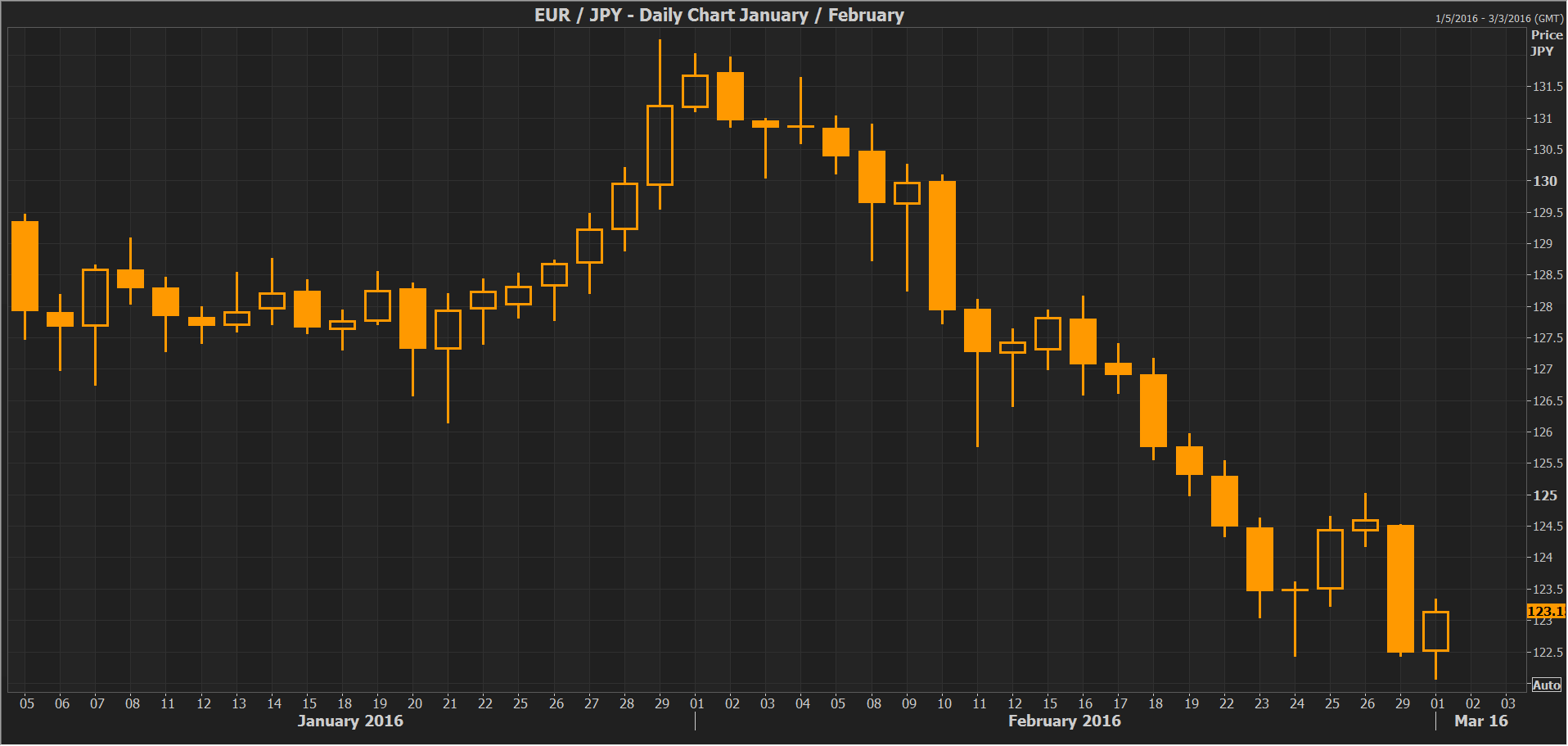It is very rare these days to meet a policymaker in an advanced economy who is after a strong currency. A weaker currency can help revitalize a country’s export sector without the need for painful reforms or boosting competitiveness through other measures. This was again evident in the first two months of 2016, particularly because manufacturing was weak across many countries and some policymakers believed that a weaker currency might provide some relief to this problem. As aggressively easy monetary policies are being pursued by various countries, it is perhaps little surprise that zero-yielding gold benefitted, while trying to find the currencies that are appreciating in this environment has proven difficult.
The main previous answer to the question of finding the outperforming currency has been the US dollar, but it should be kept in mind that despite the bullishness surrounding the greenback, the dollar index has not been able to break new highs since March of 2015 – one year ago. Furthermore, the Fed’s path to higher interest rates is not yet so clear so as to inspire the bulls to push the currency even higher.
No interest rate increase is expected during the March meeting of the Federal Reserve, despite some better-than-expected data regarding US GDP, inflation and durable goods orders. This could mean that the earliest a rate hike could take place is probably June. The President of the New York Fed, a permanent voting member of the Federal Open Market Committee, sounded rather dovish in his latest speech, which was perhaps another indication that the Fed isn’t going to raise rates soon.
Selling the euro, but against what?
The latest Eurozone inflation numbers, on the other hand, boosted the chances that the ECB is going to take some stimulus action in its meeting on 10th March. The real question is whether Draghi will go beyond the widely anticipated cut of the deposit rate deeper into negative territory and expand the Quantitative Easing program. Perhaps the ECB would do well to look at Japan’s example, where a QE program which was much bigger than the Eurozone’s, did not have much impact in boosting inflation. Instead the program did lead to much higher stock prices and a lower currency – both of which appear vulnerable to very steep corrections.
Despite the euro’s obvious weaknesses, selling it against some of its major counterparts such as the US dollar or sterling is less clear. The dollar’s drawbacks and its inability to break to new highs were discussed above, whereas sterling is expected to be very volatile ahead of the June referendum on EU membership.
Currencies influenced by commodity prices on the other hand, such as the Australian dollar and the Canadian dollar, may find it difficult to extend their winning run, despite some recent impressive gains, unless key commodities such as oil and iron ore, also stabilize.
The one currency that has posted impressive gains against the euro so far this year has been the yen, as euro/yen traded at near 3-year lows. The pair touched the 122 level again today. It appears that the yen is preferred as a safe haven compared to the euro, as Japan, despite its massive public debt, is not facing serious challenges such as Brexit, the migration issue, a sovereign debt crisis, high non-performing loans and high unemployment.
Furthermore, Japan has been a net exporter of capital in the past, and at times of crisis Japanese investors often repatriate capital by selling foreign investments. Therefore, despite running the biggest Quantitative Easing program in the world, the yen has apparently weakened enough until end-2015 and has bounced higher in the first two months of the year. The yen was very much disliked going into 2016, but it looks like currencies might continue to defy predictions for the next few months, which will make trends difficult to spot. 
